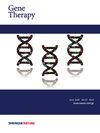揭开分子的秘密:分析稳定的慢病毒包装细胞系可以识别新的病毒基因功能。
IF 4.5
3区 医学
Q1 BIOCHEMISTRY & MOLECULAR BIOLOGY
引用次数: 0
摘要
慢病毒载体(LVVs)由于其感染分裂细胞和非分裂细胞的能力而广泛应用于基因治疗。对于LVV的生产,创建具有病毒复制所需的集成基因的稳定包装细胞系提供了一种更一致和可扩展的替代瞬时质粒转染方法。虽然已经报道了这种稳定的LVV包装细胞系的发展,但稳定和可诱导的病毒基因表达诱导的分子变化以及基因组整合病毒基因对细胞通路的影响仍然知之甚少。为了更好地了解LVV,我们通过比较差异表达基因,研究了稳定LVV包装细胞系及其宿主细胞系HEK293T/17的分子特征。该途径分析显示,受不同病毒转基因的影响,包装和宿主细胞系之间的途径使用发生了显著变化。Gag-pol的表达抑制宿主的翻译机制,而rev和VSV-G的表达调节线粒体途径,包括氧化磷酸化。另一方面,HIV-1的表达激活了组蛋白相关基因。这些调节变化表明,宿主细胞状态的战略性重编程有利于病毒复制,抑制蛋白质合成和能量产生到支持病毒组装的水平,但损害宿主的免疫防御和免疫相关蛋白的产生。我们的研究结果提供了对与稳定病毒基因表达相关的分子变化的更深入的理解,这可以为基因治疗应用中LVV生产的优化提供信息。本文章由计算机程序翻译,如有差异,请以英文原文为准。

Unveiling molecular secrets: Analysis of stable lentiviral packaging cell lines enables identification of novel viral gene functions
Lentiviral vectors (LVVs) are widely used in gene therapy due to their ability to infect both dividing and non-dividing cells. For LVV production, the creation of stable packaging cell lines with integrated genes necessary for viral replication offer a more consistent and scalable alternative to transient plasmid transfection approach. Although the development of such stable LVV packaging cell lines has been reported, the molecular changes induced by stable and inducible viral gene expression and the impact of genome integrated viral genes on cellular pathways remain poorly characterized. For better insight, we investigated the molecular characteristics of a stable LVV packaging cell line and its host cell line (HEK293T/17) by comparing differential expressed genes. This pathway analysis revealed significant changes in pathway usage between packaging and host cell lines, influenced by different viral transgenes. Gag-pol expression was found to suppress host translational machinery, while rev and VSV-G expression modulated mitochondrial pathways, including oxidative phosphorylation. HIV-1 tat expression, on the other hand, activated histone-related genes. These regulatory shifts suggest a strategic reprogramming of host cellular states to favor viral replication, curbing protein synthesis and energy production to levels that support viral assembly but impair the host’s immune defense and the production of immune-related proteins. Our findings provide a deeper understanding of the molecular changes associated with stable viral gene expression, which can inform the optimization of LVV production in gene therapy applications.
求助全文
通过发布文献求助,成功后即可免费获取论文全文。
去求助
来源期刊

Gene Therapy
医学-生化与分子生物学
CiteScore
9.70
自引率
2.00%
发文量
67
审稿时长
4-8 weeks
期刊介绍:
Gene Therapy covers both the research and clinical applications of novel therapeutic techniques based on a genetic component. Over the last few decades, significant advances in technologies ranging from identifying novel genetic targets that cause disease through to clinical studies, which show therapeutic benefit, have elevated this multidisciplinary field to the forefront of modern medicine.
 求助内容:
求助内容: 应助结果提醒方式:
应助结果提醒方式:


